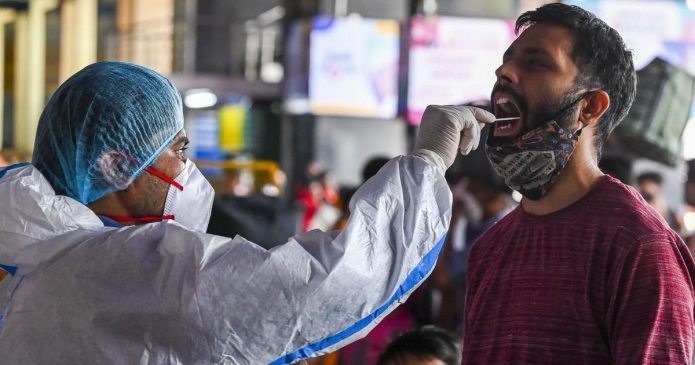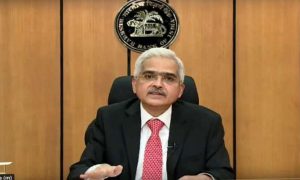A meeting with experts on June 3 emphasised the importance of seroprevalence survey and genome sequencing to plan for a potential third wave.
The Tamil Nadu government has started putting together a plan for a possible COVID-19 third wave. Sources in the Tamil Nadu government told TNM that a meeting was held with experts on June 3 with regard to this. The meeting included epidemiologist Dr Jayaprakash Muliyil, National Institute of Epidemiology (NIE) Director Dr Manoj Murhekar, NIE Deputy Director Dr Prabhdeep Kaur, virologist Dr Jacob John, former Director of Public Health Tamil Nadu Dr Kolandasamy, Global Coordinator of the People’s Health Movement T Sundararaman, paediatric intensivists among others.
“We sat together to think about whether there will be a third wave, when it will be and how it’s going to pan out. So, first we wanted to understand will there be a third wave – when and how much time will it take to come and how different will it be from what we are observing. These are the parameters we are trying to understand,” said a top official.
To help the state prepare for a likely third wave, the Tamil Nadu government first needs data. Experts have recommended that the state gather seroprevalence data as well as conduct frequent genome sequencing to keep a track on how the SARS-CoV-2 virus that causes COVID-19 is mutating. While the state government has carried out two sero surveys so far – the first in October-November 2020 following the first wave, the second was carried out in April 2021 prior to the second wave. The third sero survey is expected to be conducted in July-August 2021 to understand what percentage of the state’s population has antibodies – either acquired through natural infection or because of vaccination. This, experts said, will help the government understand how many susceptible individuals are there in the state’s population. “These are the two vital things we need. Then we need to plan – we expect the best and plan for the worst. That’s the general consensus,” said the official.
District-level response system
The wheels are, however, already in motion even as these datasets are awaited. Speaking to TNM, Dr Jacob John, who formerly headed ICMR’s Centre for Advanced Research in Virology, and Christian Medical College (CMC), Vellore professor emeritus, said, “Preparations for the third wave should not be specific to the third wave alone. The reason being there is no way you can predict the third wave during the second wave. The second wave has to come down, then we need to know the trend of infections, the dynamics if any new variant other than the Delta (B.1617.2) and Kappa (B.1.617.1) is appearing which is faster than Delta and Kappa. So the preparation is not going to be third wave specific, it’s going to be healthcare, people’s needs specific.”
Among the key recommendations made by experts include having a decentralised planning and response system. “You can’t plan for the districts while sitting in Chennai. Districts are different,” said the official. Expanding on this, Dr Jacob John said that the idea is to have a district-level task force, which looks at its unique features and plans for its health management. “If one district has one million people and only 10 beds per 1000 population then bring it up. Or one district has 1000 beds then keep it. If one district has too few primary health centres or sub centres then those things can be looked at. Streamline everything on a district level,” he said.
Planning for a paediatric surge
While there has been much discussion over children possibly being affected in the third wave, officials in Tamil Nadu government said that there is no need to panic, with a plan already in place in the event of a surge in paediatric cases. “We already have an existing system for pediatric emergencies – for newborns to 18 years of age. So we have protocols. We have our own nodal officers. So they are already working based on data collected. So as far as Tamil Nadu is concerned, we are looking at the surge capacity plan.What is the requirement of human resources and other resources. We are already going ahead and not waiting for anything,” said the official.
He said that the government is working on strengthening paediatric emergency units, sick newborn units in all medical colleges and district hospitals besides maternity hospitals. In addition, the government is also ensuring that cases seen or treatment protocols prescribed by the Institute of Child Health, Chennai are assimilated to other district hospitals. “We are also doing grand rounds where new things observed in the apex institute (ICH) are assimilated in the field. So what is being done for MIS-C (multisystem inflammatory syndrome in children) for example. These grand rounds happen routinely so there is no lag in what they observe and what the field should understand. The planning is ongoing.”
Augmenting beds and oxygen storage
As part of its plan to strengthen general health systems, the government is ramping up oxygen beds in district hospitals and augmenting oxygen storage as well. Tamil Nadu presently has an oxygen storage capacity of 1200 tonnes. In the peak of the second wave, Tamil Nadu used over 600 tonnes of oxygen, according to the official. However, the oxygen shortage that the state faced during the peak of the second wave was owing to issues of transportation, inadequate containers, cryogenic tankers rather than inadequate production, explained the official. To address this problem, the Tamil Nadu Medical Supply Corporation plans to add another 200 tonnes storage capacity in strategic locations.
Former DPH Dr Kolandasamy told TNM that the private sector also needs to prepare for a possible third wave. Pointing to several instances where COVID-19 patients were shifted from private hospitals to government medical facilities citing lack of oxygen or beds, Kolandasamy said, “The private sector should be mandated to increase beds, increase oxygen production capacity in medical colleges. They have huge resources and need to invest.”
In addition to oxygen and beds, the former DPH said the government must increase the number of ambulances as well as procure more oxygen equipment such as concentrators, tools, masks, and high-flow nasal cannula. He also recommends creating an oxygen corridor and a step-down ward in major hospitals. An oxygen corridor is a landing point where patients can be transferred from the ambulance to stretchers, where they will be administered immediate oxygen and attended to by a doctor. A step-down ward is one where patients who are weaned from high-flow oxygen can instead be provided oxygen concentrators or cylinders, thereby freeing up oxygen beds with piped supply of the lifesaving gas.
He also said that an inventory of medicines and equipment needs to be taken, especially in rural areas, “If we see a peak of 50,000 daily cases in the next wave, how much do we need to manage this.”
Vaccination
Vaccination is the cornerstone of the government’s strategy. Experts have told officials that inoculation must be the fundamental strategy to make a possible third wave short and small. Dr Kolandasamy recommends prioritising individuals who have high interactions with the public. “The government must prioritise auto and cab drivers, vegetable vendors, persons working in pharmacies, provision stores, mechanics, those delivering newspapers and milk,” he said. With the Union government presently not permitting pregnant women to take the COVID-19 vaccine, he suggested that all family members of pregnant women should instead be vaccinated on priority.
Dr Kolandasamy also suggested that the focus of the government must be on overall prevention. This makes hotspot containment a vital strategy. He pointed out that closed and contained spaces have in the past turned into clusters. “For example departmental stores, jewelry shops, textile showrooms, shopping malls, banks and offices are spaces without ventilation. They need to ensure ventilation. The government should promote open spaces,” he said. Another concern was hospitals becoming COVID-19 hotspots. The former DPH said to prevent this the hospitals must prevent intermingling of different wards and departments such as pharmacy, laboratories and maternity wing as well as regulate visitors by ensuring that only immunised attenders be allowed.





































